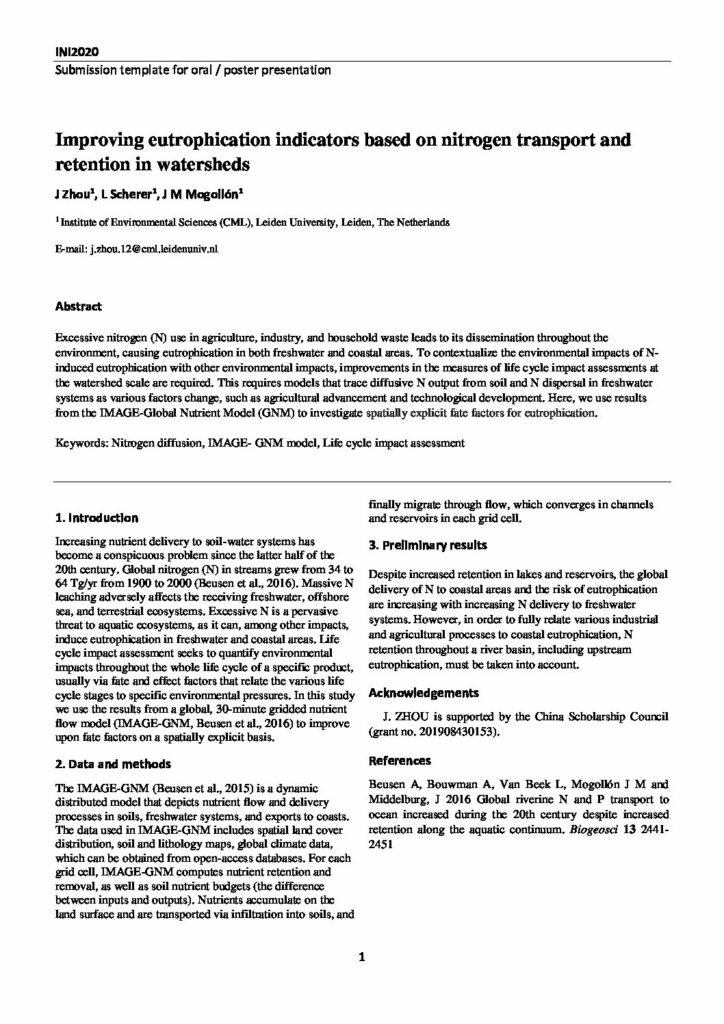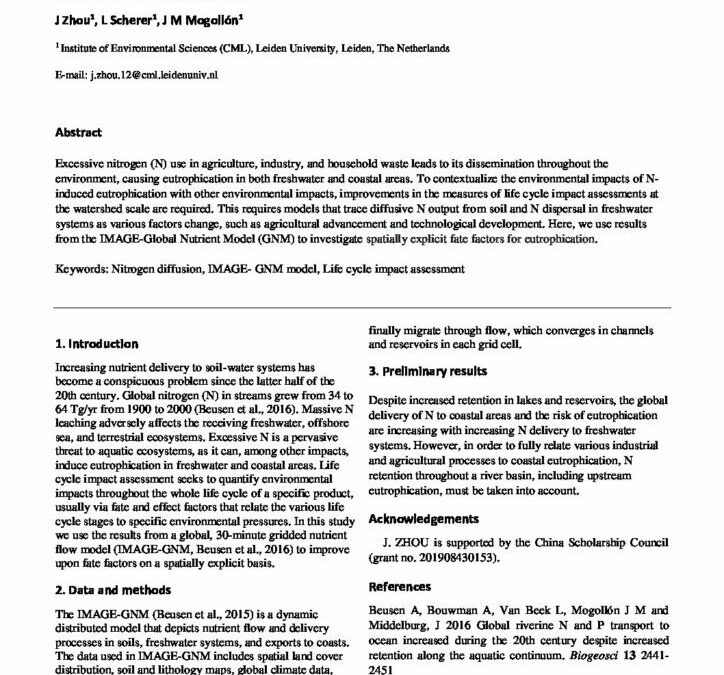Improving eutrophication indicators based on nitrogen transport and retention in watersheds

Excessive nitrogen (N) use in agriculture, industry, and household waste leads to its dissemination throughout the environment, causing eutrophication in both freshwater and coastal areas. To contextualize the environmental impacts of Ninduced eutrophication with other environmental impacts, improvements in the measures of life cycle impact assessments at the watershed scale are required. This requires models that trace diffusive N output from soil and N dispersal in freshwater systems as various factors change, such as agricultural advancement and technological development. Here, we use results from the IMAGE-Global Nutrient Model (GNM) to investigate spatially explicit fate factors for eutrophication.
Increasing nutrient delivery to soil-water systems has become a conspicuous problem since the latter half of the 20th century. Global nitrogen (N) in streams grew from 34 to 64 Tg/yr from 1900 to 2000 (Beusen et al., 2016). Massive N leaching adversely affects the receiving freshwater, offshore sea, and terrestrial ecosystems. Excessive N is a pervasive threat to aquatic ecosystems, as it can, among other impacts, induce eutrophication in freshwater and coastal areas. Life cycle impact assessment seeks to quantify environmental impacts throughout the whole life cycle of a specific product, usually via fate and effect factors that relate the various life cycle stages to specific environmental pressures. In this study we use the results from a global, 30-minute gridded nutrient flow model (IMAGE-GNM, Beusen et al., 2016) to improve upon fate factors on a spatially explicit basis.
